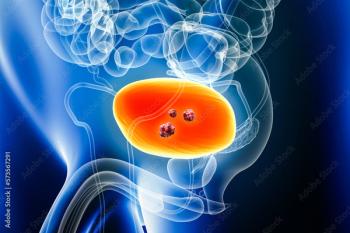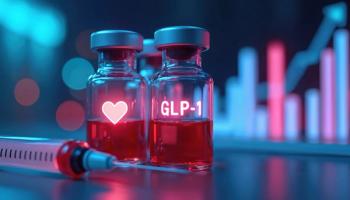
Semaglutide's Role in the GLP-1 Agonist Market
Glucagon-like peptide-1 receptor agonists have been gaining popularity to treat diabetes. Does this one provide advantages over competitors?
Glucagon-like peptide-1 receptor agonists, also known as GLP-1 agonists, have been gaining popularity to treat diabetes.
Their effectiveness in lowering A1C levels and providing cardiovascular benefits in select products contribute to their positive reputation. The FDA approved semaglutide (Ozempic) in December.1 Some may question semaglutide’s role, because a number of popular GLP-1 agonists are already on the US market. However, it may have offer advantages over competitors.
Indication/Dosing
An
Mechanism of Action
Semaglutide is a GLP-1 agonist that works by sensitization of beta islet cells of pancreas, which consequently reduces the threshold for insulin secretion in response to carbohydrate intake.4 It also suppresses postprandial glucagon release from the alpha cells of the pancreas. Therefore, semaglutide is effective at controlling the postprandial glucose level. Its additional effects include delayed gastric emptying and reduced appetite, which can lead to weight loss. Because semaglutide's mechanism is glucose-dependent, it is very unlikely to cause hypoglycemia. The additive effect of GLP-1 agonist therapy with dipeptidyl peptidase - 4 (DPP-4) inhibitors is unclear.
Drug Interactions/Precautions
Semaglutide causes a delay in gastric emptying and therefore has the potential to affect the absorption of concomitantly administered oral medications. However, there were no clinically relevant drug interactions during clinical trials.1 Semaglutide carries a boxed warning about the risk of thyroid c-cell tumors, because of observations of rodents. There is no evidence to support the risk of thyroid c-cell tumors in humans. Therefore, it is contraindicated in patients with a family or personal history of multiple endocrine neoplasia syndrome type 2. Semaglutide does not require dose adjustment in patients with reduced hepatic and renal function.
Semaglutide-treated subjects in the SUSTAIN-6 trial had a lower risk for new or worsening nephropathy compared with the placebo group.5 However, subjects in the semaglutide group experienced more retinopathy complications than the placebo group, even though the overall number was low.
Conclusion
Semaglutide is a once-weekly subcutaneous injectable GLP-1 agonist with cardiovascular benefit that can provide convenience to those who are looking to reduce the number of injections that are necessary for other treatment options. Semaglutide’s ability to effectively lower A1C levels and provide a cardiovascular benefit without the need for hepatic or renal dose adjustment makes it an attractive choice among GLP-1 agonists.
References
- Ozempic [prescribing information]. Plainsboro, NJ: Novo Nordisk, Inc; 2017. novo-pi.com/ozempic.pdf. Accessed October 15, 2017.
- Aroda VR, Rosenstock J, Terauchi Y, et al. Effect and Safety of Oral Semaglutide Monotherapy in Type 2 Diabetes—PIONEER 1 Trial. Diabetes. 2018;67(Supplement 1). doi: 10.2337/db18-2-lb.
- Novo Nordisk. Oral semaglutide demonstrates favourable cardiovascular safety profile and significant reduction in cardiovascular death and all-cause mortality in people with type 2 diabetes in the PIONEER 6 trial. novonordisk.com/media/news-details.2226789.html?rel=0". Published November 23, 2018. Accessed January 6, 2019.
- American Pharmacists Association. The pharmacist & patient-centered diabetes care. pharmacist.com/pharmacist-patient-centered-diabetes-care. Accessed October 15, 2018.
- Marso S, Bain SC, Consoli A, Eliaschweitz FG, et al. Semaglutide and cardiovascular outcomes in patients with type 2 diabetes. N Engl J of Med. 2016;375(19):1834-1844.
Newsletter
Stay informed on drug updates, treatment guidelines, and pharmacy practice trends—subscribe to Pharmacy Times for weekly clinical insights.













































































































































































































